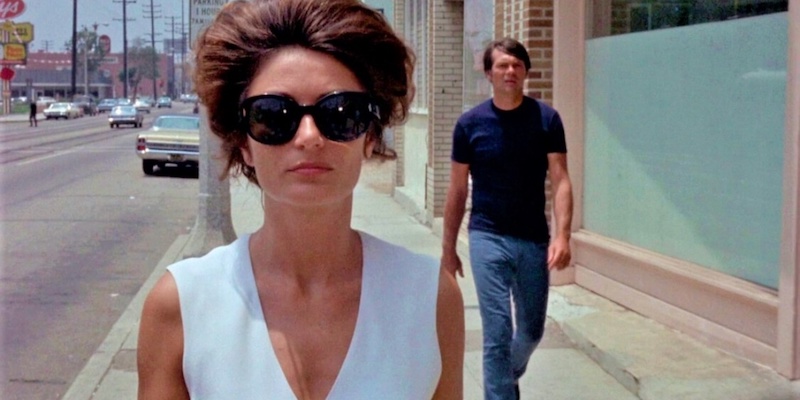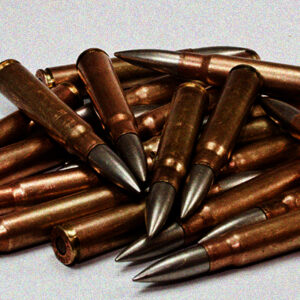I grew up in Philadelphia, where winters could be brutal. David Goodis said it best on the opening page of Black Friday:
“January cold came in from two rivers, formed four walls around Hart and closed in on him… He was shivering and he could feel the cold eating into his chest and tearing away at his spine…The cold was even worse on Broad Street. From the east it brough an icy flavor from the Delaware. From the west it carried a mean grey frost from the Schuylkill.”
Temps that low can make a human being long to be somewhere else. Somewhere warm and sunny… like Los Angeles, California. But when you’re cold and can’t afford a winter vacation, you do the next best thing: you put on a movie set in sunny L.A.
Which is how I ended up in the habit of spending every January watching a very specific kind of crime movie—something I call the L.A. “hang” film. By “hang” films, I mean crime movies (though sometimes not) with a more leisurely pace, where the relationships and culture and soundtrack and locations take center stage, while the plot kind of hums along in the background (if there even is a plot). In short, a “hang” film is one where you enjoy hanging out with the characters, even if their lives are circling the drain.
After years of these virtual January vacations, I finally moved my family to sunny L.A. in 2016. And two years later, I started writing California Bear, which was very much inspired by this small body of films that were released in and around the 1970s. It’s no coincidence that these “hang” films coincided with the rise of New Hollywood—with Dennis Hopper and Francis Ford Coppola leading the charge. But by the 1980s, any attempts to make a “hang” film was probably noted to death by a coked-out exec looking for endless action-driven set pieces.
Don’t get me wrong—I love a good mindless 1980s action flick. I’ve even written novel versions of them (see: The Blonde, Fun & Games). But as I’ve gotten older, I realize that real life is more like a hang film. There you are, eating donuts or drinking beer or driving around L.A. with Kris Kristofferson on the radio… all the while you have no idea that someone is out plotting your demise. Maybe you’ll clue into it in time. Maybe not. But hey, at least you had a good hang along the way.
Here are the L.A. films I would obsess over during those bitter cold January evenings on the mean streets of Philadelphia. (By the way, I am typing these words on a raw, rainy, and bitter January day here in Pasadena.)
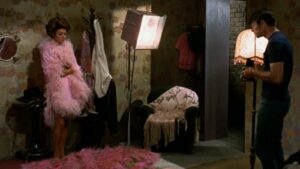
MODEL SHOP
Released: February 11, 1969
To my mind, Jacques Demy’s Model Shop was the first L.A. “hang” film and set the tone for the others on this list. This is not a crime film, though plenty of transgressive things happen in it. George Matthews (Gary Lockwood) is broke, unemployed, and about to lose his vintage M.G. convertible to the bank. He has a hot girlfriend named Gloria (Alexandra Hay) and a groovy little pad in Venice Beach—but this is the late 60s, when groovy Venice pads came with oil derricks outside your bedroom window. And Gloria is on the verge of throwing him over for a better prospect. So George climbs into his M.G. and cruises around L.A. looking for a hundred bucks to keep the repo at bay. This movie, by the way, really isn’t about the hundred bucks. It’s about the human beings George meets up with along the way, including Tom Holland (the director of Fright Night, in an early acting role), the real-life band Spirit (playing themselves) and of course Lola… the French woman who is working in the titular model shop until she can make enough for a return trip to Paris. (A model shop, by the way, is a place where you can rent a camera to take photos of women in various states of undress.) The rest of the film is about the temporary entanglement of these two very different lives, played out in the California sun—and for Gary, against the looming specter of Vietnam.
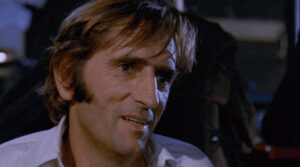
CISCO PIKE
Released: January 14, 1972
This might the most leisurely-paced ticking-clock thriller I’ve ever watched. But that’s part of Cisco Pike’s wily, druggy charm—it’s the journey, man, not the destination. Wave away the pot smoke and you’ll find that Cisco Pike has a classic crime plot: a dude with a shady past promises his girl he’ll go straight, but he’s forced back into the life anyway. Cisco (Kris Kristofferson) and his partner Jesse Dupree (Harry Dean Stanton) once sold a million records as a pop duo; now Jesse is hooked on smack and Cisco’s still reeling from a drug bust at the hands of twitchy narcotics cop Leo Holland (Gene Hackman). One Friday afternoon Holland shows up at Cisco’s Venice Beach apartment not to bust him, but recruit him. Seems that Holland’s lucked into (read: stole) ten kilos of grass, and he needs Cisco to move ten thousand dollars’ worth by Monday morning. “That’s an awful lot of grass to move in two days,” says a dubious Cisco. Thus begins Cisco’s epic drug dealin’ Odyssey, which takes him to L.A. recording studios, the Hollywood Hills, the Troubadour, Beverly Hills, and grungy topless bars on a mission, in the words of Bill Norton’s screenplay, “to subvert the minds of the good citizens of Los Angeles.” I adore this movie so much I have an original poster hanging in my writing office.
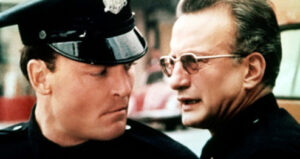
THE NEW CENTURIONS
Released: August 3, 1972
This is your ideal hang film—if your idea of a good time is hanging out with the Fuzz. There is no Big Bad guy in this movie, nor some kind of citywide conspiracy to unravel. Instead, we follow three rookie members of the LAPD (Stacy Keach, Scott Wilson, and Erik Estrada) as they are paired with more seasoned cops to teach them how to navigate the streets of early 70s Hollywood. Imagine a full season of streaming procedural series compressed down to 103 minutes—and yet, it’s still very much a hang movie… or more appropriately, a ridealong movie. Even though I’d heard of the Joseph Wambaugh novel, the movie was unknown to me until I took a bus tour of L.A. back in 2009 and our guides—Kim Cooper and Richard Schave of Esotouric—played a clip where the wonderfully gruff George C. Scott (as “Andy Klivinsky”) shows Baby Keach how to keep prostitutes off the streets when charges never seem to stick. “Klivinsky’s law states,” Scott explains, “give one pass down Western Avenue just to show ‘em the wagon. If they don’t run for cover, pick ‘em up, run around for couple of hours, and generally bust up their evening. It’s illegal as hell, but it works.”
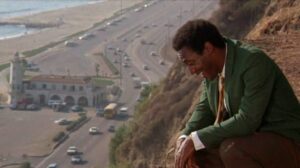
HICKEY AND BOGGS
Released: September 20, 1972
In this early buddy team-up, Los Angeles is presented as a Warren Zevon-style daymare of sirens and sunbaked streets and automatic weapons within easy reach of children. An amoral paradise where murders are ordered as easily as a sandwich and a bottle of Coke. A city where defenestration and killer smog and a fusillade of hot lead on the 50-yard line means it’s… Tuesday. And what about the Chandler-style heroes, the chivalrous knights who are supposed to hold this place back from the brink of chaos? Not only are they tarnished and afraid, but they’re either full-blown alcoholics or haunted divorcees unable to afford their phone bill. Robert Culp (I Spy) directed Hickey & Boggs from an early Walter Hill script—which could be seen as a dry run for 48 Hrs. Actor Jason Culp told me that his father took Hill’s script up to a cabin in the mountains and spent a week rewriting every line of dialogue. “As he had always done for Bill [Cosby],” Jason explained, “keeping their relationship in mind. That was what interested him the most—their relationship. Dad and Bill would call each other ‘Stan’ and ‘Ollie.’ And in a way, Hickey & Boggs is a noir version of Laurel and Hardy. No matter how they feel about each other in the moment, they will never leave each other in the lurch.”
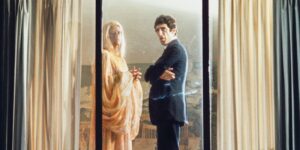
THE LONG GOODBYE
Released: March 7, 1973
In my freshman days as a mystery novelist, I witnessed some light-hearted banter between editor/bookseller Otto Penzler and novelist Michael Connelly as they debated the merits of The Long Goodbye, Robert Altman’s divisive adaptation of the Raymond Chandler novel. Otto was firmly in the no fucking way camp; Connelly, on the other hand, says the film saved him from a life in building construction. I first watched Long Goodbye under perhaps the best possible: while staying in the very same apartment where Eliot Gould’s Marlowe lives in the film. This was thanks to the generosity of the same Mike Connelly, who graciously invited me to crash there on my L.A. book tour stop. Now please imagine me, incredibly jetlagged and waking up in a strange bedroom with a cat. Me, shuffling into the kitchen to find a glass of water. Then imagine me, putting the DVD into the player and watching… Eliot Gould as Marlowe, waking up in the same exact bedroom with a cat, then shuffling into the same exact kitchen… I wasn’t just enjoying a hang film; I was living it. Needless to say, I’m with Connelly on this one.
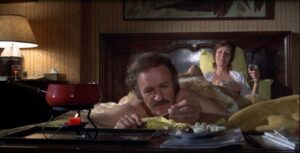
NIGHT MOVES
Released: June 11, 1975
Technically, this Arthur Penn-directed (and Alan Sharp-penned) detective story is only half an L.A. hang film; the other half takes place in the Florida. But I argue it qualifies, because private eye Harry Moseby (Gene Hackman) does a lot of hanging out on both coasts. Harry’s latest case is a wandering daughter job, but he finds the daughter pretty quick—realizing too late that she’s in the middle of a conspiracy involving stunt men and seaplanes and ancient relics and… well, none of that is super important, because remember: this is a hang film. And the grim fun of this neo-noir tale is watching poor Moseby try to puzzle out the mysteries of his own marriage along with the case at hand. I realize that sounds terribly downbeat, and it is… but Night Moves is also masterful, and probably my favorite private eye movie next to The Long Goodbye. After I moved to L.A., I had the special thrill of realizing that Harry does a lot of driving up and down San Fernando Road in Burbank, just down the road from we were living.
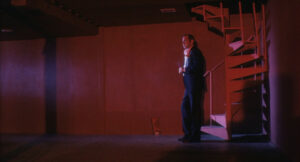
THE KILLING OF A CHINESE BOOKIE
Released: February 15, 1976
I first watched this John Cassavettes gangster film at the New Beverly Cinema (owned and operated by Quentin Tarantino), during a mini-festival honoring the late director in November 2016. I had only been in town a few months, and Killing was the secret tour of Hollywood I never knew I needed. Ben Gazzara plays Cosmo Vittelli, who not only owns a burlesque joint on the Sunset Strip but considers himself an artist. “My name is Cosmo Vittelli. I’m the owner of this joint. I choose the numbers, I direct them, I arrange them. If you have any complaints, you just come to me and I’ll throw you right out on your ass.” Problem is, he’s also a hardcore gambler, and has just finished paying off a seven-year debt to a local loan shark. To celebrate the final payment, Cosmo goes on a bender and ends up.. well, right back where he started, $23,000 in the hole, and on the verge of losing his beloved Crazy Horse West. The local mob dangles a solution: if Cosmo murders some low-level book, the debt will be cleared. You may have heard this noir plot before, but no one tells it like Cassavettes. And it really clicks into place when you realize that Cosmo is a stand-in for creatives; the studios are the mob. If you want the ultimate “hang” experience, opt for the longer, more immersive 1976 version (available on the Criterion Channel).
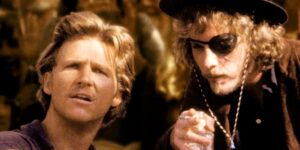
CUTTER’S WAY
Released: March 20, 1981
Yes, this “L.A.” hang film is largely set in Santa Barbara, about ninety miles up the coast. And yes, it was released many years after the heyday of the hang film. But this Ivan Passer film is one of the last gasps of this forgotten subgenre. Jeff Bridges is Richard Bone, a gigolo (and to my mind, Jeff “The Dude” Lebowski in a past life). John Heard is Alex Cutter, a barroom blowhard and Vietnam vet (who could have possibly served with Walter Sobchak). Together they team up to solve a murder, with Cutter convinced it’s all part of this huge international conspiracy. Maybe it is! Maybe it isn’t. What becomes clear is that this case is way above Cutter and Bone’s pay grade (not that anyone is paying them). I first watched Cutter’s Way during a college course on Vietnam War films. But I didn’t truly appreciate it until I’d read the source novel—Newton Thornburg’s brilliant Cutter and Bone—years later, and then revisited the movie. Both book and film were huge inspiration for my characters Jack “Killer” Queen and Cato Hightower in California Bear. And even though the film pretty much skips the last third (seriously) of the novel, I highly recommend both.
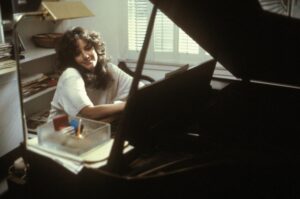
MIKE’S MURDER
Released: March 9, 1984
James Bridges wrote and directed this final L.A. hang movie, and it is sort of the flip side to Model Shop. Debra Winger plays Betty Parris, a Brentwood bank teller who has an on-again, off-again romance with Mike Chuhutsky, who works part time as a tennis instructor. The other half of the time? He’s a drug dealer. Mike the Criminal is just as much as a cipher as Lola the Model, and after his murder (not a spoiler; it’s in the title), Betty takes it upon herself to… well, not so much solve the mystery of the killing, but the mystery of Mike himself. I’m a huge fan of the theatrical version of the film, but I was fascinated to learn that Bridges’ original cut told the story in reverse… pre-dating Christopher Nolan’s Memento by a decade and a half. I’d give anything to spend two hours hanging out with that version.
***


